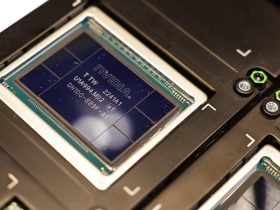Avidity Biosciences, Inc. (NASDAQ:RNA) has been able to prove that its RNA technology Antibody Oligonucleotide Conjugates [AOC] is capable of being able to help target rare muscle disorders. Matter of fact, since the last article I wrote about it in a piece entitled “Avidity Biosciences: DMD Advancement And 2024 Catalysts Make It A Must-Watch,” the company delivered well on its promise regarding being able to release data from both phase 1/2 studies, each using AOC-1044 [Del-zota] and AOC1020 [Del-brax] to treat patients with Duchenne Muscular Dystrophy [DMD] and Facioscapulohumeral muscular dystrophy [FSHD] respectively.
Why should investors care about this biotech? That’s because with its AOC platform proven beyond the scope of only using Del-desiran [AOC-1001] for myotonic dystrophy type 1 [DM1], it has now been shown to have excellent tissue penetration in both DMD and FSHD. Specifically, the positive FSHD data released from the phase 1/2 FORTITUDE study, will now lead to a few milestones. The first milestone being a biomarker registrational cohort to be initiated in 2nd half of 2024 and then a functional cohort expected to start in 1st half of 2025.
Regarding the use of Del-zota for the treatment of patients with DMD, there are ongoing discussions with the FDA to be in a position for a possible Accelerated Approval pathway for it. This means, this is another program which is gearing up for late-stage advancement. Lastly, the program at the top of the list that it is developing would be the use of Del-desiran in the ongoing phase 3 HARBOR study, which is exploring the use of this drug for the treatment of this patient population. This late-stage study was initiated in June 2024. With positive data from a few studies establishing additional proof-of-concept of its AOC technology, plus several other milestones to look forward to in the coming months, I believe that investors could benefit with any potential gains made.
Del-brax For The Treatment Of Patients With Facioscapulohumeral Muscular Dystrophy
One of the first highly promising programs that did well, since the last time I wrote about this biotech, would be the use of Del-brax for the treatment of patients with Facioscapulohumeral Muscular Dystrophy [FSHD]. This RNA drug was tested in the phase 1/2 FORTITUDE study, targeting this specific patient population. Before going over this program, plus any catalysts to come out of it, I believe that it is first important to understand what this disorder is. Facioscapulohumeral Muscular Dystrophy [FSHD] is a muscular dystrophy disorder characterized as bulk muscle degeneration. However, with this rare muscle disorder, the main parts of the body affected are: Face, shoulders and upper arms. This disorder can be split into two different types as follows:
- Adult onset form
- Infantile onset form.
The more common one would be the adult onset form, which is typically first observed in adolescence. Out of all the three target indications being explored, this is the 2nd largest patient population one. With DM1 [myotonic dystrophy type 1] being first and then DMD being 3rd largest regarding only the targeting of exon44 skipping people. It is said that there are approximately between 16,000 to 38,000 patients in the United States with FSHD.
How does one get such a rare muscle disorder? The main root cause of it is a wrong expression of the double homeobox protein 4 gene [DUX 4]. The main problem is that the D4Z4 region at the end of the DNA chromosome has the wrong expression. That is, it is hypomethylated, which results in a lack of attached methyl groups. To put it into perspective, the more methyl added to this region, the less repeats necessary in DNA for a patient to function correctly. Thus, the D4Z4 region for these FSHD patients is abnormally shortened. It is shortened from 11 to 100 repeats down to 1 to 10 repeats, and thus this is why the disease occurs. How does Del-brax play into this? It removes the abnormal expression caused by DUX 4. Thus, a therapy that reduces this gene considerably, actually targets the underlying cause of this disorder. This is precisely what this RNA drug does, and was shown to do in the ongoing phase 1/2 FORTITUDE study.
To see if Del-brax is capable of being able to be used as an AOC against this disorder, the company is running the phase 1/2 randomized, placebo-controlled FORTITUDE trial. This trial recruited a total of 39 adult patients and gave them intravenous infusion of this drug over a 4-month period. It was noted, first and foremost, that there were no serious or severe adverse events to note off and most adverse events that were observed, were mild in nature. Plus, the fact that there were no discontinuations either. In terms of efficacy, this RNA drug did something very remarkable, which is that it reduced the root cause of FSHD. How so? Well, remember above, I stated that the incorrect expression caused by DUX 4 leads to a shortened DNA repeat. By removing a lot of the DUX 4 gene, it allows the DNA to function far more correctly than it would otherwise do so. Thus, the result was that the patients who were treated with 2 mg/kg of Del-brax had a mean reduction of DUX 4 by 50%. The bottom-line is that there are no FDA approved drugs to treat this rare muscle dystrophy disorder and thus, there is potential for Del-brax to be the first one. Not only the first in terms of receiving U.S. marketing approval from the FDA, but something these patients need, which is to target the root cause of this disorder.
Based on the release of positive data observed from this phase 1/2 FORTITUDE study, it is looking to accelerate its move towards the initiation of registrational cohorts. Having said that, it is deploying to registrational cohorts with such an expected time frame as follows:
- Biomarker registrational cohort — plan to recruit up to 40 patients, expected to be initiated in the 2nd half of 2024
- Functional registrational cohort — recruitment plan to be announced at a later date, but to be initiated at some point in the 1st half of 2025
Thus, the bottom line here is that this was the third program to show that the company’s AOC technology platform works well in muscle tissue penetration.
Del-Zota For The Treatment Of Patients With Duchenne Muscular Dystrophy
The other promising program to go over, which also yielded substantially positive data, was the one that used RNA drug Del-zota for the treatment of patients with Duchenne Muscular Dystrophy. This drug was tested in the phase 1/2 EXPLORE44 study targeting patients with this disorder. Before going over the positive data that was released from this study, plus any catalysts to come out of this program, it is first important to understand what DMD is and what the possible market opportunity might be. Duchenne Muscular Dystrophy [DMD] is a type of muscle dystrophy disorder caused by a faulty DMD gene, which leads to a lack of protein dystrophin production. The global Duchenne Muscular Dystrophy Market is expected to reach $8.19 billion by 2029. This is a massive market opportunity, but it is critical to note that the first target choice is the DMD patients who are only amenable to exon 44 skipping. Should the targeting of this subpopulation play out well accordingly, then it could be in a position to then go after exon 45 skipping and beyond.
To see if Del-zota is capable of being able to treat patients with exon 44 skipping DMD, it is in the process of running the phase 1/2 EXPLORE44 trial. This early-stage study recruited a total of 27 DMD patients amenable to exon 44 skipping and who were given this RNA therapy. A total of 25 participants were recruited into this study across two dose levels, which were 5 mg/kg and 10 mg/kg respectively. However, it is important to note that the only patients who were evaluated regarding the highly positive data, were those who were in the 5 mg/kg treatment group. Despite the data only including the 10 patients from the lower 5 mg/kg cohort, the data was strong nonetheless. At 4 months of treatment, it was noted that there was a statistically significant increase of 25% of dystrophin protein production. Not only that, but there was an 80% reduction of creatine kinase levels to near normal from baseline over this 4-month period.
Why is this data special? That’s because this was the best achieved data to date regarding the currently available phosphorodiamidate morpholino oligomer [PMO] that has been approved to treat these patients. Dystrophin proteins produced by gene therapies are good, but nowhere near full-length, like Del-zota has been able to do. Most treatment-emergent adverse events from this trial were shown to be mild in nature. The latest update is that enrollment of the phase 1/2 EXPLORE44 study has been completed. However, why investors should be concerned with this program is because of what, I believe, could be a possible catalyst to look forward to. There is a plan to have an open dialogue with the FDA to attempt to establish an Accelerated Approval pathway for Del-zota for these exon 44 skipping DMD patients. If granted by the FDA and then subsequently announced by Avidity, then I believe it could be a milestone that may lead to the share price trading higher.
Financials
According to the 10-Q SEC Filing, Avidity Biosciences had cash, cash equivalents and marketable securities of $1.3 billion as of June 30th of 2024. The reason for the cash on hand was because it closed a previously announced underwritten public offering of common stock. This is where it sold a total of 12,135,500 shares of its common stock at a price of $38 per share to the public.
In addition, to the underwriters exercising their option in full to purchase an additional 1,582,500 shares of common stock at the very same purchase price to the public. Total gross proceeds from this offering, before deducting expenses, were $461 million.
While this was a good amount of cash on hand, it was still not a good cash runway. How so? That’s because in its 10-Q SEC filing, it stated that it believed it would have enough cash on hand for at least the next 12 months.
Having said that, it chose to raise additional funds through another offering. It enacted on offering back on August 14th of 2024, expected to close today, to raise approximately $281.7 million. However, if the underwriters’ exercise their option in full, then it would be able to obtain $324 million in cash instead. The cash burn of the company per quarter is $84.6 million.
Risks To Business
There are several risks that investors should be aware of before investing in Avidity Biosciences. The first risk to consider would be regarding the development of Del-brax for the treatment of patients with FSHD, which was explored in the phase 1/2 FORTITUDE study. The end goal is to add biomarker and functional registration cohorts to this study. There is no assurance that the data released from the FORTITUDE trial, will be similar to that which will be shown in subsequent data from these other registrational cohorts. Plus, there is no assurance that the FDA will be satisfied in approving Del-brax for the treatment of this FSHD patient population solely based on these added registrational cohorts.
The second risk to consider would be in terms of developing Del-zota for the treatment of patients with DMD. This RNA AOC drug was tested in the phase 1/2 EXPLORE44 study, targeting exon 44 skipping patients. The plan is to open dialogue with the FDA in hopes of possibly seeking Accelerated Approval of this drug for these specific DMD patients. The risk here is that there is no assurance that the FDA will allow for the Accelerated Approval pathway for it based on currently available data. In addition, there is no assurance that the final data to be released from either the phase 1/2 EXPLORE44 trial or the Open-Label extension study will be positive.
The third and final risk to consider would be in terms of the phase 3 HARBOR study, which is using Del-desiran for the treatment of patients with DM1. The phase 3 study was initiated in June 2024 and this program is now well underway. The primary efficacy measure for this late-stage study is going to measure myotonia [delayed reaction of skeletal muscles] through the use of evaluation with something known as video hand opening time [vHOT] over a 30-week period. Even though the prior MARINA-OLE study showed functional improvements for patients given Del-desiran such as myotonia, there is no assurance that the primary endpoint of vHOT will be met with statistical significance compared to the placebo.
Conclusion
Avidity Biosciences is now better than ever before. Again, it has been able to report positive data from two other studies since the last time I wrote about it. It has shown to do well in FSHD patients using Del-brax over a 4-month period, greatly reducing DUX 4 with a mean reduction of 50%. In terms of DMD patients, it was shown to increase the production of dystrophin protein expression by 25% up to a level up to 54% of normal. This biomarker is important because it could open the door for the company to receive Accelerated Approval of Del-zota for DMD because of it. The AOC platform has been proven in these two indications and then with the lead program using Del-desiran targeting DM1. I believe that this company is a stronger buy now more than ever, because of what advancements it has made and will likely continue to do so in the coming years.
Read the full article here






Leave a Reply